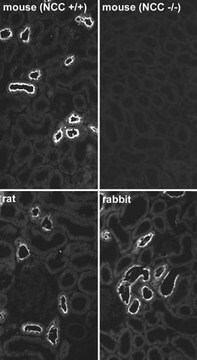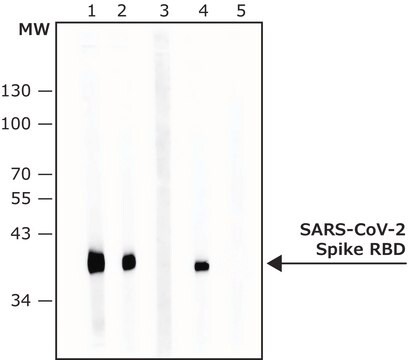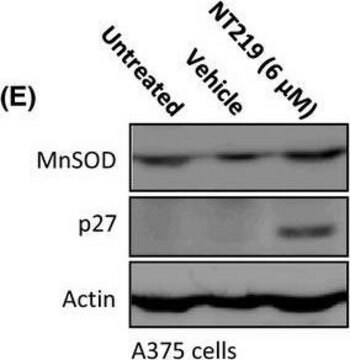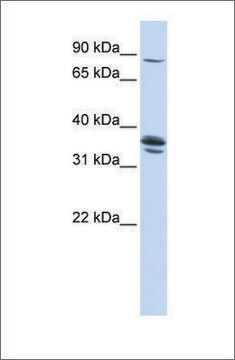MABN1813
Anti-sodium/hydrogen exchanger 3 Antibody, clone 3H3
clone 3H3, from mouse
Synonym(s):
Sodium/hydrogen exchanger 3, Na(+)/H(+) exchanger 3, Solute carrier family 9 member 3
About This Item
Recommended Products
biological source
mouse
Quality Level
antibody form
purified immunoglobulin
antibody product type
primary antibodies
clone
3H3, monoclonal
species reactivity
human, mouse, rat, opossum
species reactivity (predicted by homology)
porcine (based on 100% sequence homology)
packaging
antibody small pack of 25 μg
technique(s)
immunohistochemistry: suitable
immunoprecipitation (IP): suitable
western blot: suitable
isotype
IgG1κ
UniProt accession no.
shipped in
ambient
target post-translational modification
unmodified
Gene Information
mouse ... Slc9A7(236727)
General description
Specificity
Immunogen
Application
Western Blotting Analysis: A representative lot detected NHE3 in Western Blotting applications (Wang, D., et. al. (2006). Am J Physiol Renal Physiol. 290(2):F428-37; Queiroz-Leite, G.D., et. al. (2011). Biochem Biophys Res Commun. 409(3):470-6; Goyal, S., et. al. (2005). Am J Physiol Renal Physiol. 288(3):F530-8; Kocinsky, H.S., et. al. (2005). Am J Physiol Renal Physiol. 289(2):F249-58; Di Sole, F., et. al. (2008). J Cell Physiol. 216(1):221-33; Baum, M., et. al. (2012). Am J Physiol Renal Physiol. 303(11):F1495-502; Lessa, L.M., et. al. (2012). Am J Physiol Renal Physiol. 303(10):F1399-408).
Immunohistochemistry Analysis: A representative lot detected NHE3 in Immunohistochemistry applications (Pao, A.C., et. al. (2010). Am J Physiol Renal Physiol. 299(6):F1496-506).
Immunoprecipitation Analysis: A representative lot detected NHE3 in Immunoprecipitation applications (Girardi, A.C., et. al. (2004). Am J Physiol Renal Physiol. 287(5):C1238-45).
Neuroscience
Quality
Western Blotting Analysis: 0.25 µg/mL of this antibody detected NHE3 in lysates from COS-7 cells transfected with wild type NHE3 plasmid DNA.
Target description
Physical form
Storage and Stability
Other Notes
Disclaimer
Not finding the right product?
Try our Product Selector Tool.
Storage Class Code
12 - Non Combustible Liquids
WGK
WGK 1
Flash Point(F)
does not flash
Flash Point(C)
does not flash
Certificates of Analysis (COA)
Search for Certificates of Analysis (COA) by entering the products Lot/Batch Number. Lot and Batch Numbers can be found on a product’s label following the words ‘Lot’ or ‘Batch’.
Already Own This Product?
Find documentation for the products that you have recently purchased in the Document Library.
Our team of scientists has experience in all areas of research including Life Science, Material Science, Chemical Synthesis, Chromatography, Analytical and many others.
Contact Technical Service








